A beloved Italian seafood pasta recipe, spaghetti with white clam sauce is a popular dish throughout Italy. In this Italian Spaghetti with Clam Sauce recipe, we’ll explain how to make a perfect, creamy seafood sauce without any additional ingredients—just like the best chefs make this dish in Italy!
Here’s a look at a succulent plate of Spaghetti with Clams made with this recipe:
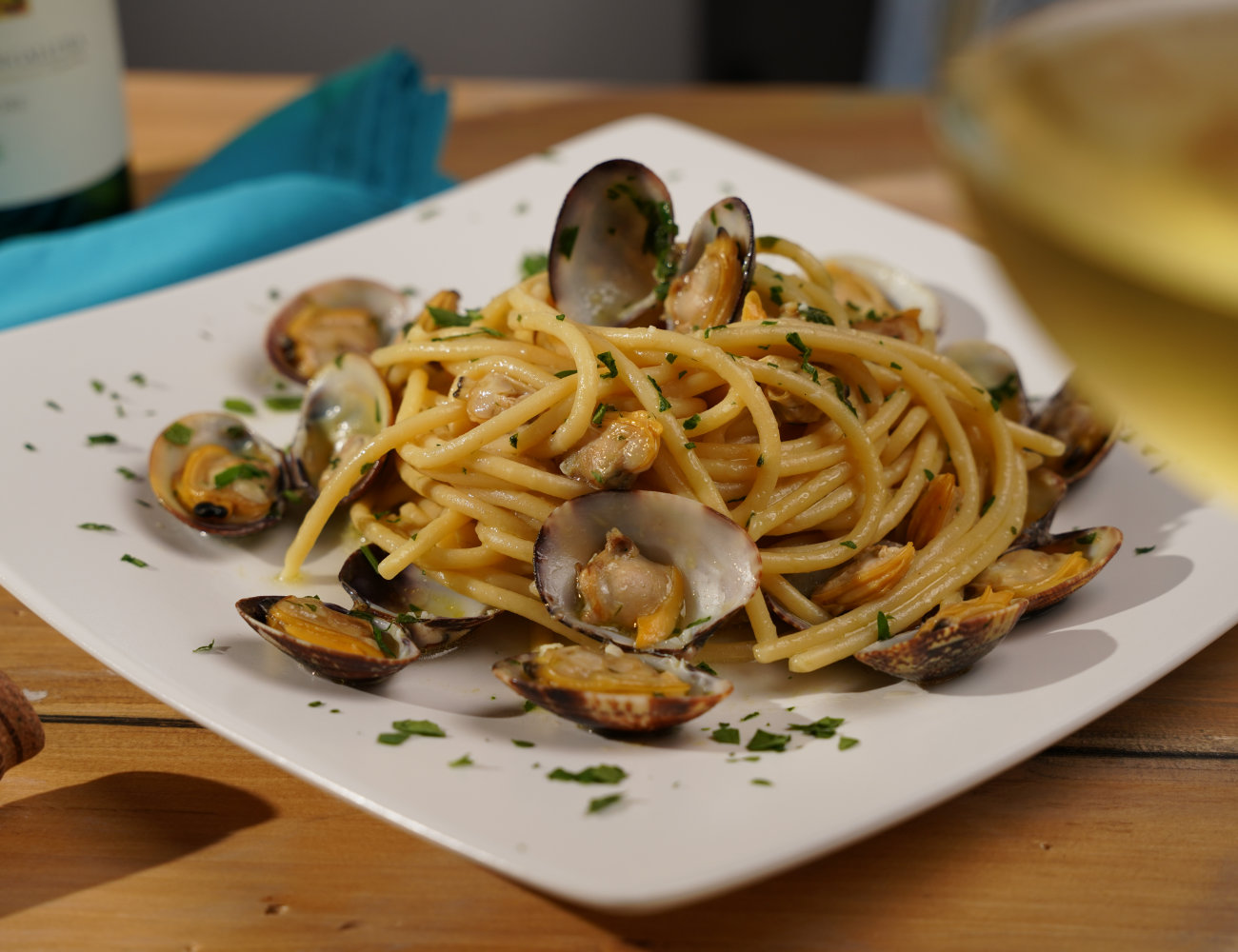
Watch the Video Recipe!
Learn how to make Spaghetti with Clam Sauce in this video recipe, filmed in Italy:
Subscribe to our YouTube Channel
More video recipes? Subscribe to our YouTube Channel (it’s FREE) and click the bell to get notifications when we release a new video recipe!
In Italian? Spaghetti alla Vongole ricetta classica
How to Make Spaghetti with Clams
Unlike mussels, clams usually contain quite a bit of sand within their shells. In order to be sure that sand doesn’t ruin your clam sauce, you’ll want to soak the clams before steaming them, then filter the resulting broth. Keep reading to learn how!
Which Clams to Choose?
Technically, the tastiest clams to use are called vongole veraci in Italian. The latin name for these little guys is Venerupis decussata.
Real vongole veraci are extremely difficult to find these days. Even in Italian supermarkets, sometimes clams are labeled vongole veraci when they are not. So, if you cannot find these, choose small steamers, cherrystones, or littlenecks clams.
How to Prepare Clams for Pasta
How to Clean Clams and Check for Signs of Life
- Visible cracks in shell? Discard.
- Is shell open and does not close after you tap it? Discard.
- Rinse the outside of the clams.
Discard any clams that have visible cracks. If the shell of a clam is open (outside of water), give it a light tap on a bowl or surface. Does the shell immediately close? Then the clam is still alive and probably safe to eat.
If the shell does not close after you tap, discard it. These clams are not safe to eat. It may sound sadistic, but you need to cook shellfish when they are alive. If the shell is already open out of water, the clam is likely dead.
Soak the Clams to Remove Sand!
There are two schools of thought regarding soaking clams. Some argue that the resulting clam broth will be less flavorful if you soak the clams first. However, by soaking the clams in a salt water solution before steaming them, you can drastically reduce the amount of sand in the resulting clam broth.
We think bits of sand absolutely ruin a delicious white clam sauce, and so we soak.
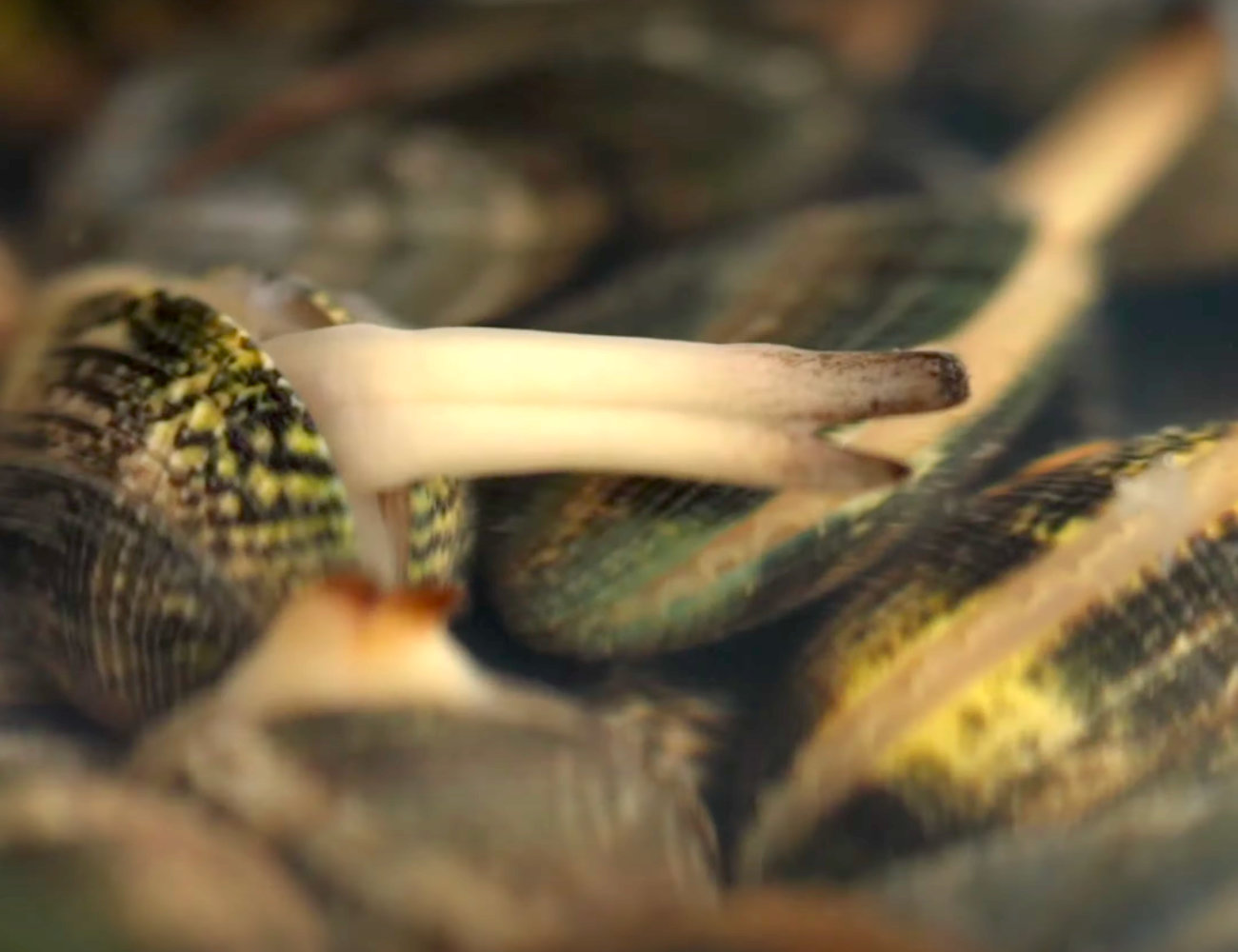
How to Soak Clams
- Prepare a salt water solution for soaking the clams —2 tablespoons (35 g) of fine salt to 4 cups (1 liter) of water.
- Soak the healthy clams in the salted water for at least 2 hours.
- Remove the clams with a slotted spoon—This ensures that the sand that sank to the bottom during the soak remains there.
- Do not strain the water to remove the clams—We don’t want to pour that sand we extracted back over our clams by straining!
Tips for Soaking Clams
During the soak, the clam shells will open and many will poke their little heads out. This is totally normal! They are doing this to exchange the water in their shells with the fresh salt water you’ve provided them.
After Steaming, Filter the Clam Broth
Once the clams are steamed, we still filter the clam broth with a fine sieve or cheesecloth to remove any remaining sand.
How to Steam Clams
The key ingredient in our delicious Spaghetti with Clam Sauce recipe is fresh clam broth —and the clam meat of course.
Steaming clams is very easy and a key step in many classic Italian food recipes.
It usually starts with a bit of olive oil in the bottom of a skillet. We create a soffritto with garlic and herbs (in this case flat leaf Italian parsley). Our bed of aromatics ready, we add the fresh clams, followed by a splash of white wine to de-glaze the pan.
Then, we simply cover the clams and cook them over medium heat until all or most shells have opened. Discard any clams whose shells have not opened after steaming. They aren’t safe to eat.
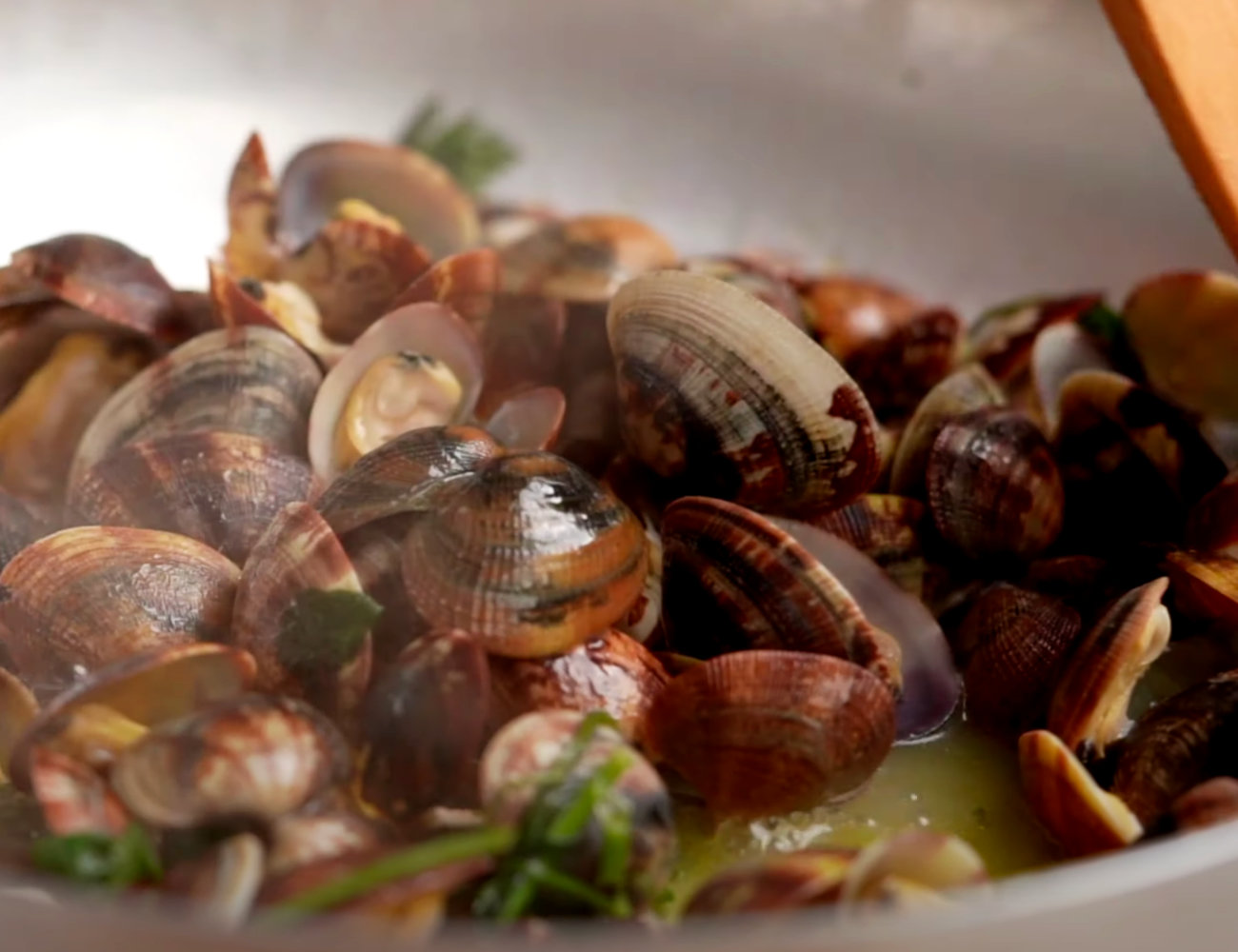
At this point, you need to strain the lovely broth that the steamed clams have produced—to remove any sand that remains.
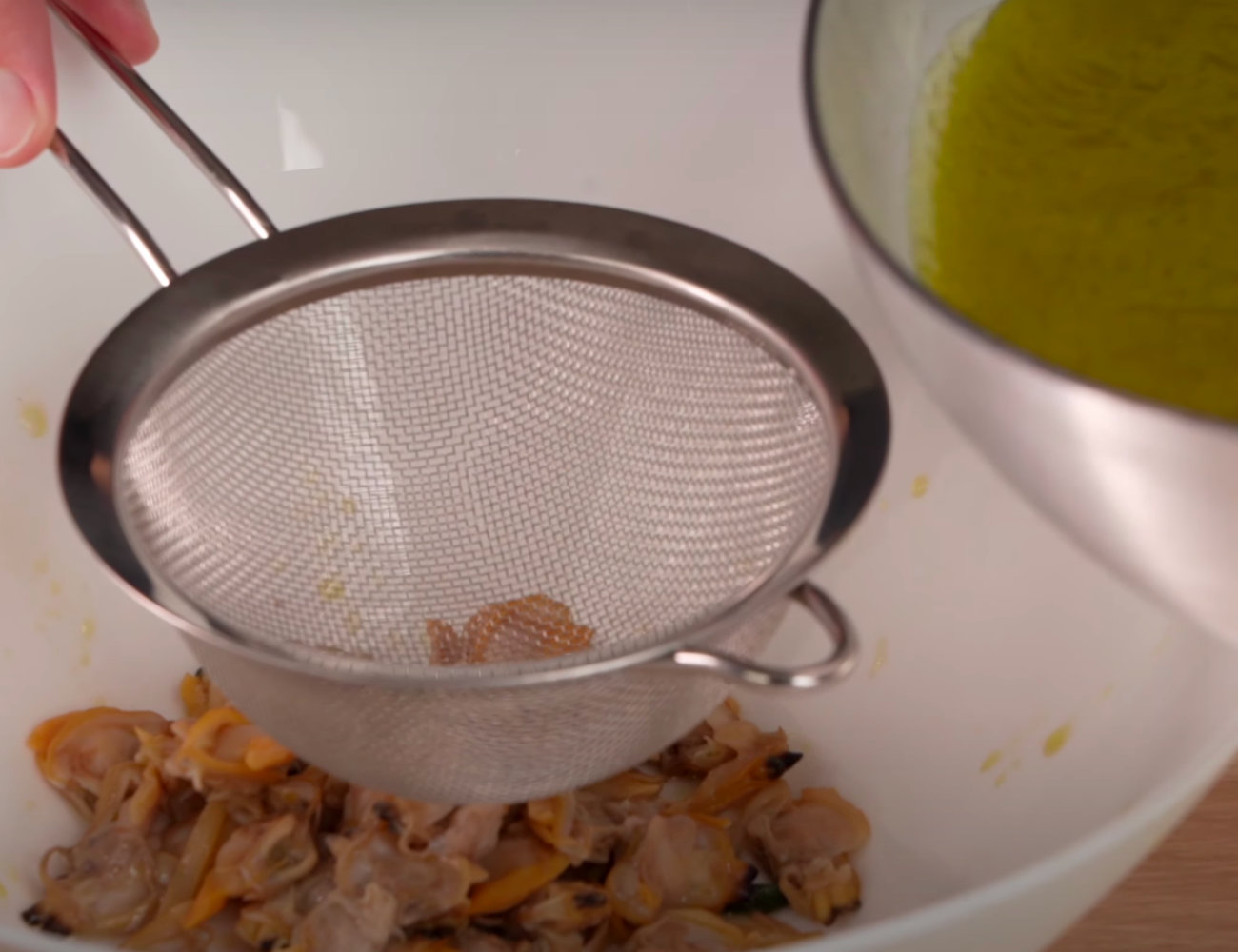
Then, remove the meat from most of the clam shells and put the meat in the strained broth until you are ready to use them. This keeps the clam meat moist and prevents it from drying out!
We always leave a few steamed clams in their shells for decorating our Spaghetti with Clams during plating.
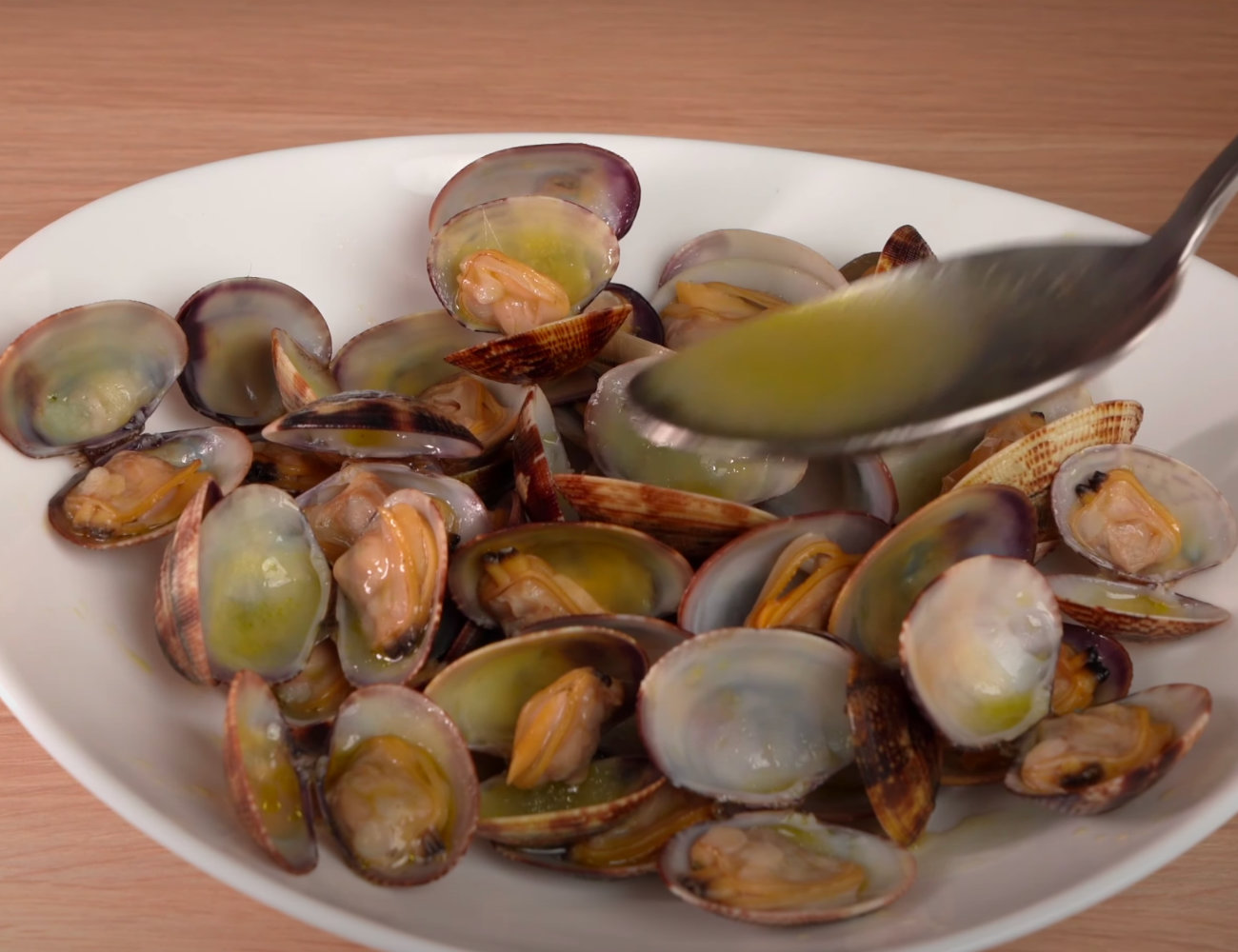
Preparing the Sauce
In a skillet, we make another soffritto: with olive oil, minced parsley, garlic and a bit of chili pepper. Then, we add all of the clams and the strained clam broth to the same skillet.
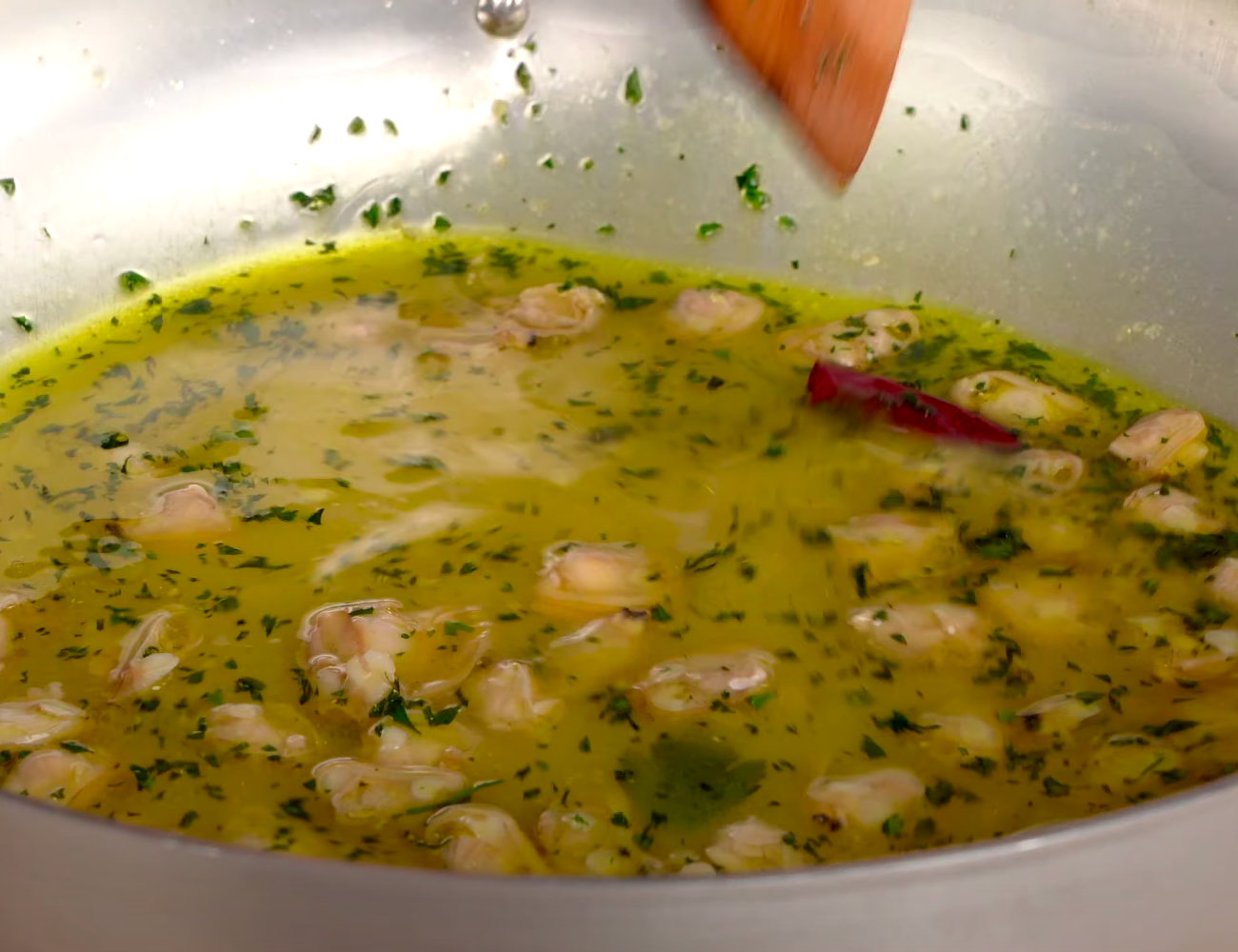
Finish Cooking the Pasta in the Pan!
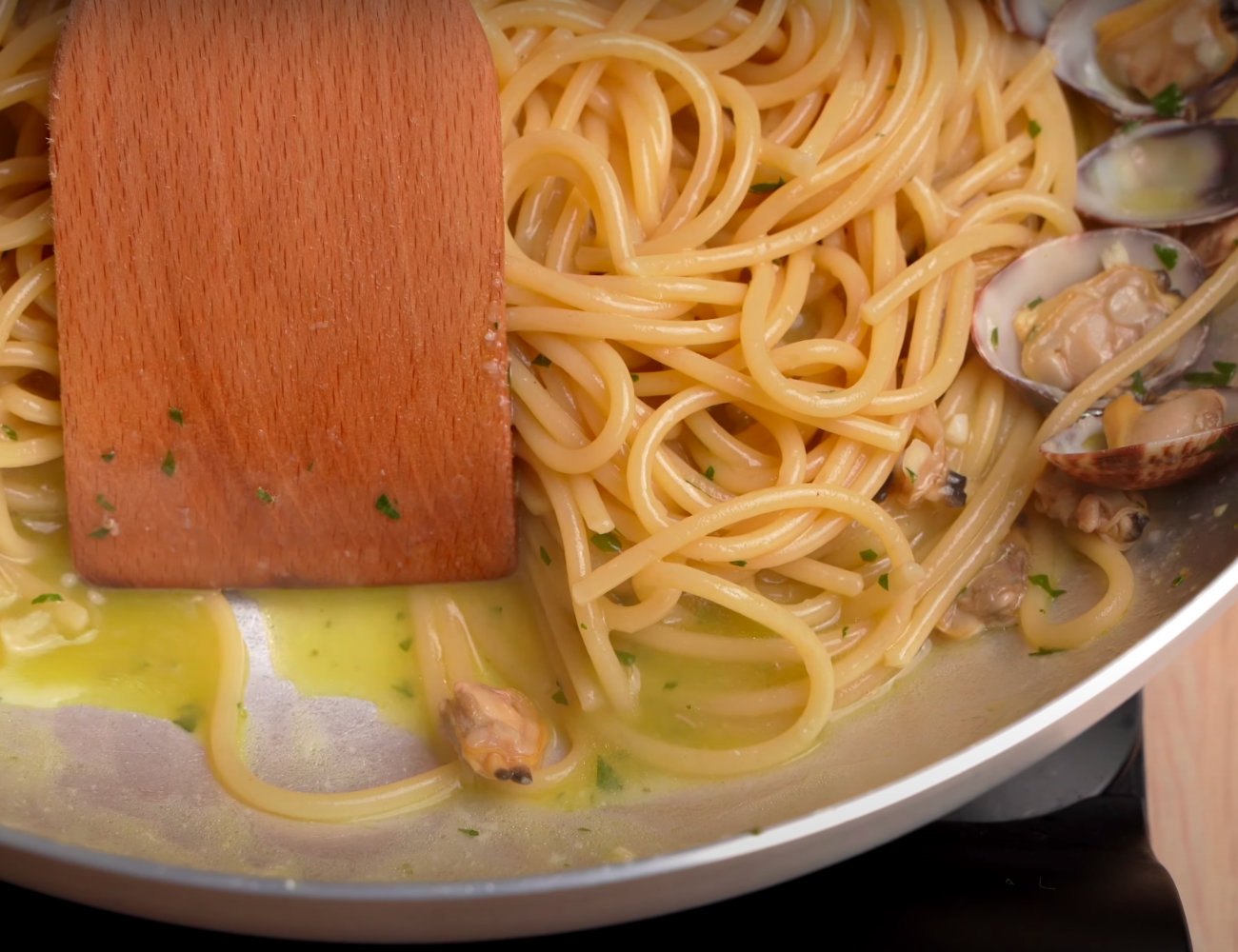
While our seafood pasta sauce simmers, we partially cook our spaghetti in a pot of unsalted boiling water. Cook the spaghetti for just half of the time required for al dente pasta on the package. Again:
- DO NOT SALT the pasta water – Normally pasta water is salted, but when we are making a sauce with salty seafood broth we don’t want to add additional salt at this time!
- COOK THE PASTA HALFWAY – Cook the pasta just half of the time called for on the package to cook the pasta to al dente.
- SAVE the pasta water.
Transfer the partially cooked pasta to the seafood sauce in the skillet, along with two more ladles of hot pasta water. Finish cooking the pasta to al dente in the pan with the delicious white clam sauce!
Add the clams in the shell to the finished dish and top with some more minced fresh parsley. Buon appetito!
You May Also Enjoy… Our Authentic Aglio Olio Recipe
Italian Spaghetti with Clam Sauce Recipe
Equipment
- 1 large skillet or sauce pan
- 1 large prep bowl for soaking the clams
- 1 fine sieve or cheesecloth for straining the clam broth
Ingredients
- 2.2 lb clams
- 3 cloves fresh garlic ⅓ minced
- 2 handfuls flat leaf Italian parsley roughly chopped
- ¼ cup white wine
- ½ fresh red chili pepper or to taste
- olive oil as needed
- 1 pinch fine salt or to taste
- 11 oz spaghetti
Salt Water Solution for Soaking Clams
- 4 cups filtered water
- 2 tbsp fine salt
Instructions
Discard Unhealthy Clams
- Give each clam a tap on a work surface. Those that remain closed (or close after you tap them) are likely healthy. Discard any clams with broken shells or whose shells open when tapped.2.2 lb clams
Soak the Clams
- Prepare a salt water solution for soaking the clams. To do this, add 2 tablespoons (35 g) of fine salt per 4 cups (1 liter) of water.2 tbsp fine salt, 4 cups filtered water

- Soak the healthy clams in the salted water for at least 2 hours.
- Then, remove the clams from the soaking water using a slotted spoon. Don’t just strain the water over the clams as you would do when straining pasta. We don't want to mix the sand (which has dropped to the bottom of the bowl) back in with our clams.
Steam the Clams
- Cover the bottom of a large pan or skillet with olive oil. Bring to medium heat.olive oil
- Add a handful of roughly chopped parsley and one whole clove of garlic. Sauté the parsley and garlic for about 30 seconds, then add the clams and stir.2 handfuls flat leaf Italian parsley, 3 cloves fresh garlic
- Add 1/2 cup (100 ml) of white wine. Then cover the pan and steam the clams over medium heat until most of the clam shells have opened. Discard any clams that remain unopened after steaming.¼ cup white wine

- Leave a handful of clams in their shells for decorating the finished pasta. Remove the meat from the rest of the clams.

- Strain all of the clam broth produced to remove any residual sand. Add the strained broth to the clam meat to prevent it from drying out. Set the clams aside.

Partially Cook the Pasta
- Add the spaghetti to boiling water and cook for half of the time recommended on the package for al dente pasta. Do not add salt to the water. In the meantime…11 oz spaghetti
Make the Clam Sauce
- Cover the bottom of a large pan or skillet with olive oil. Bring to medium heat.
- Add the chili pepper, minced garlic and parsley to the hot oil. Sauté briefly to infuse the oil with flavor. Add all of the clams and the strained clam broth to the same pan or skillet.½ fresh red chili pepper

Finish with Pasta
- When the spaghetti is halfway cooked, transfer it immediately to the skillet with the clams—saving the hot pasta water!
- Add 2 ladles of hot pasta water and give it a stir. Finish cooking the pasta in the clam sauce—uncovered—over medium heat. Cook the pasta until it is al dente.
- The sauce will thicken naturally due to the starch released by the spaghetti as it cooks. When the pasta is almost ready, add the clams in the shell to the pan as well to warm them up! Salt to taste (if needed).1 pinch fine salt

- Top the finished pasta with minced fresh parsley and serve!
Video
Notes
As an Amazon Associate, we earn from qualifying purchases. This means at no extra cost to you, PIATTO may earn a small commission if you click the links and make a qualifying purchase.

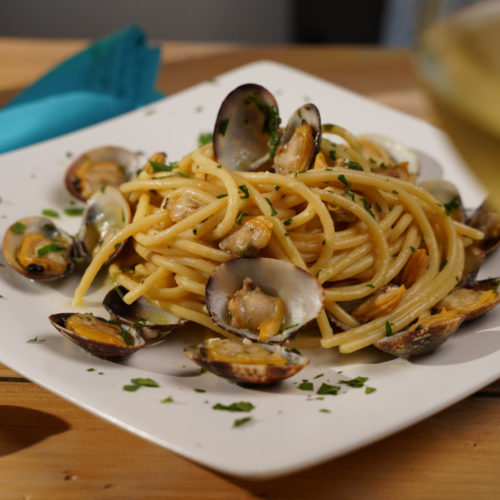
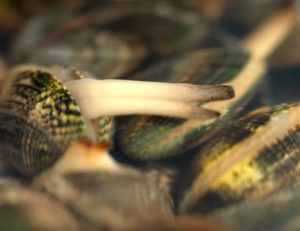
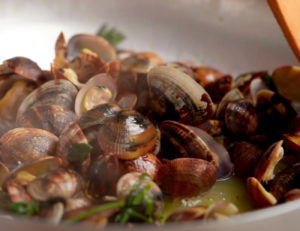
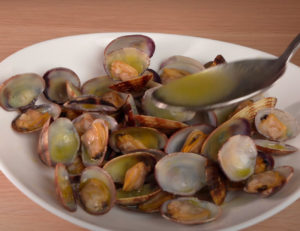
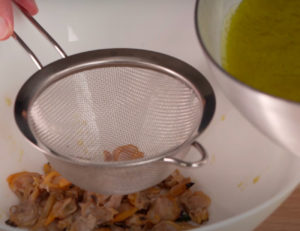
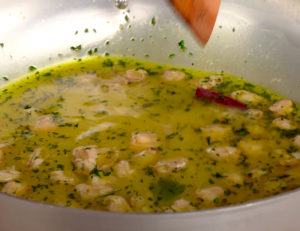
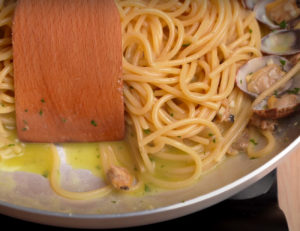

“looks so yummy and delicious 💚👍👌Thank you so much for sharing ,Your cooking skills are amazing”
“Buonasera. Altra ricetta da chef al top ma spiegato con semplicità. Grazie 👍”
“Ma che bontà, ma che bontà questi spaghetti qua’……..😋😋😋”
“Ottima ricetta
Video chiarissimo”
Using fresh clams is the only way to go. Good recipe. I use a ton of garlic in mine and always use a really good EVOO.
“Great recipe! Tried it today and the pasta was fantastic! Thank you !”
Hi Yaroslav— Glad to hear it! Thanks for taking the time to comment 🙂